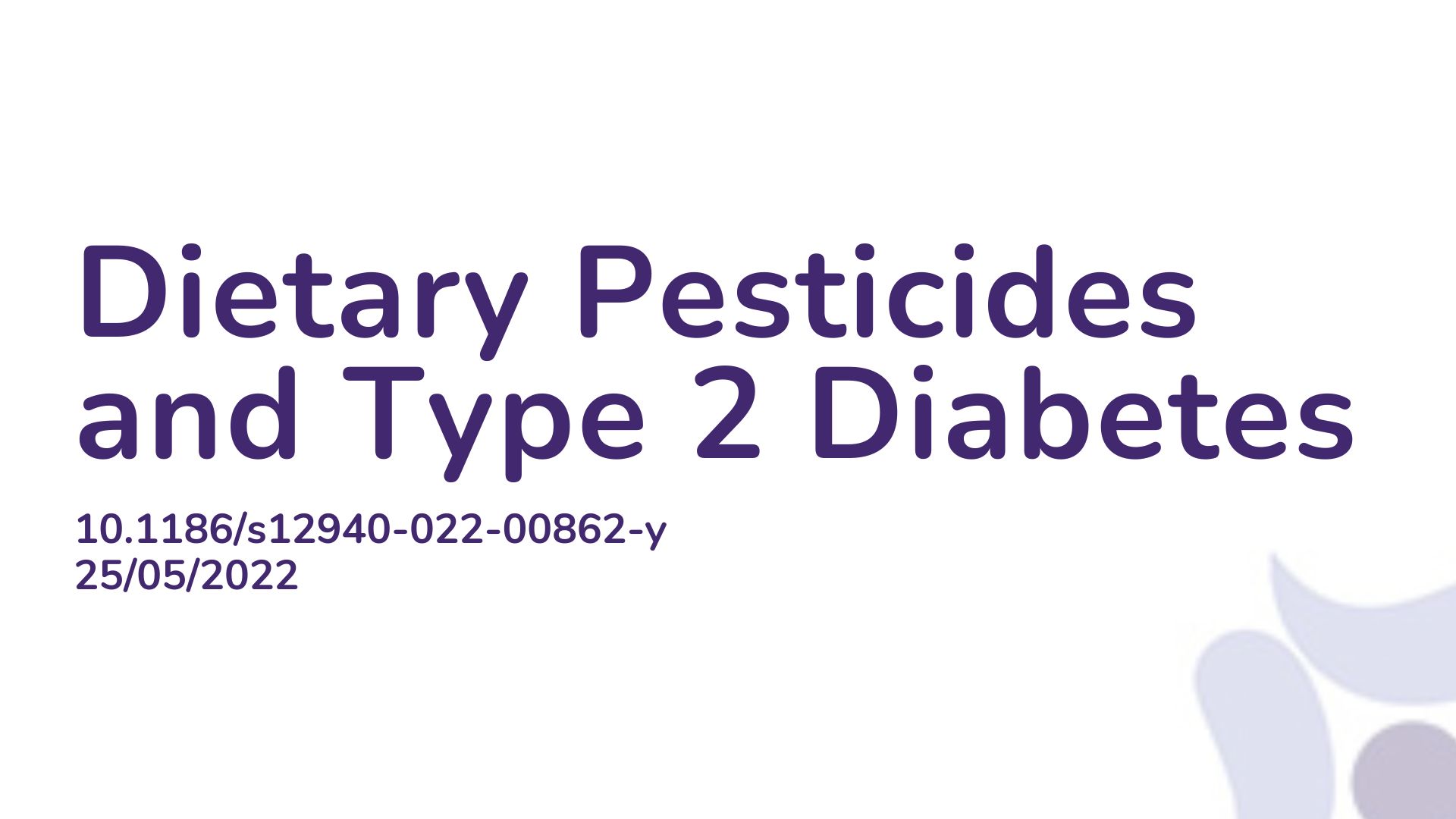Summary:
The aim of this paper was to assess associations between dietary pesticide exposure and Type 2 Diabetes (T2D). The authors reviewed data from participants of the NutriNet-Santé study. Participants completed a Food Frequency Questionnaire at baseline, assessing conventional and organic food consumption. The sample comprised 33,013 participants with an average age of 53 years, including 76% women. During the follow-up period, 340 T2D cases were diagnosed. Positive associations were detected between high exposure to several synthetic pesticides and T2D risk for the entire sample. The study also showed that low exposure to synthetic pesticides was associated with a decrease in T2D risk. These findings suggest a role of dietary pesticide exposure in T2D risk, with different effects depending on the types of pesticide mixtures participants are exposed to. These associations need to be confirmed in other types of studies and settings which explore impact on gut microbiome and could have important implications for developing prevention strategies such as dietary guidelines.
Abstract:
Background: Studies focusing on dietary pesticides in population-based samples are scarce and little is known about potential mixture effects. We aimed to assess associations between dietary pesticide exposure profiles and Type 2 Diabetes (T2D) among NutriNet-Santé cohort participants.
Methods: Participants completed a Food Frequency Questionnaire at baseline, assessing conventional and organic food consumption. Exposures to 25 active substances used in European Union pesticides were estimated using the Chemisches und Veterinäruntersuchungsamt Stuttgart residue database accounting for farming practices. T2D were identified through several sources. Exposure profiles were established using Non-Negative Matrix Factorization (NMF), adapted for sparse data. Cox models adjusted for known confounders were used to estimate hazard ratios (HR) and 95% confidence interval (95% CI), for the associations between four NMF components, divided into quintiles (Q) and T2D risk.
Results: The sample comprised 33,013 participants aged 53 years old on average, including 76% of women. During follow-up (median: 5.95 years), 340 incident T2D cases were diagnosed. Positive associations were detected between NMF component 1 (reflecting highest exposure to several synthetic pesticides) and T2D risk on the whole sample: HRQ5vsQ1 = 1.47, 95% CI (1.00, 2.18). NMF Component 3 (reflecting low exposure to several synthetic pesticides) was associated with a decrease in T2D risk, among those with high dietary quality only (high adherence to French dietary guidelines, including high plant foods consumption): HRQ5vsQ1 = 0.31, 95% CI (0.10, 0.94).
Conclusions: These findings suggest a role of dietary pesticide exposure in T2D risk, with different effects depending on which types of pesticide mixture participants are exposed to. These associations need to be confirmed in other types of studies and settings, and could have important implications for developing prevention strategies (regulation, dietary guidelines).
Article Publication Date: 25/05/2022
DOI: 10.1186/s12940-022-00862-y



